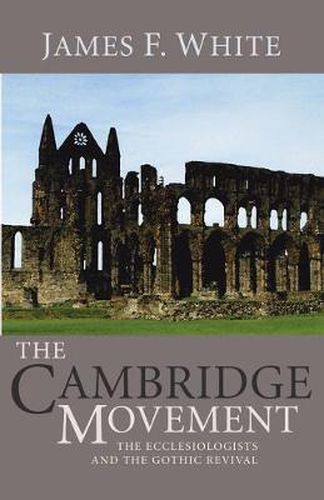Readings Newsletter
Become a Readings Member to make your shopping experience even easier.
Sign in or sign up for free!
You’re not far away from qualifying for FREE standard shipping within Australia
You’ve qualified for FREE standard shipping within Australia
The cart is loading…






This title is printed to order. This book may have been self-published. If so, we cannot guarantee the quality of the content. In the main most books will have gone through the editing process however some may not. We therefore suggest that you be aware of this before ordering this book. If in doubt check either the author or publisher’s details as we are unable to accept any returns unless they are faulty. Please contact us if you have any questions.
For over a hundred years, Anglican church buildings in every part of the world were dominated by a single idea of what churches should look like and how they should be arranged inside. Only since Vatican II has the dominance of this idea been finally overthrown. Thousands of churches still reflect the architectural dogmas of the Cambridge Camden Society. Millions of worshippers still imbibe the theology so effectively promoted by this group through its powerful influence on the arrangement of church interiors and the style of such buildings. And many of these architectural images of what is the nature of the Church itself have proved to be the most stubborn resisters of Vatican II reforms. The Cambridge Camden Society was so successful in changing the outward aspects of Anglican worship because it had specific ideas as to how churches should be arranged. The Society’s infatuation with a certain period of gothic architecture and with the whole medieval ‘cultus’ brought about drastic changes in worship according to the ‘Book of Common Prayer’ without changing a single letter of the prayer book itself. The members of the Society led the way not only in the revival of medieval architecture but also of vestments and ceremonial. Though much of the Cambridge Camden theology reflects that of the Oxford Movement, Dr. White shows both parallels and contrasts between the aims of Oxford tractarians and Cambridge ecclesiologists. Architecture proved to be every bit as effective a form of propaganda as tracts, and a good deal more permanent. The public, at first hostile, eventually became receptive to the ideals of the Cambridge Movement. The measure of the Movement’s success is seen in almost all Anglican (and many Protestant) churches built or remodelled between 1840 and the 1960s. This is a valuable contribution to nineteenth-century studies, especially to the visual history of the period.
$9.00 standard shipping within Australia
FREE standard shipping within Australia for orders over $100.00
Express & International shipping calculated at checkout
This title is printed to order. This book may have been self-published. If so, we cannot guarantee the quality of the content. In the main most books will have gone through the editing process however some may not. We therefore suggest that you be aware of this before ordering this book. If in doubt check either the author or publisher’s details as we are unable to accept any returns unless they are faulty. Please contact us if you have any questions.
For over a hundred years, Anglican church buildings in every part of the world were dominated by a single idea of what churches should look like and how they should be arranged inside. Only since Vatican II has the dominance of this idea been finally overthrown. Thousands of churches still reflect the architectural dogmas of the Cambridge Camden Society. Millions of worshippers still imbibe the theology so effectively promoted by this group through its powerful influence on the arrangement of church interiors and the style of such buildings. And many of these architectural images of what is the nature of the Church itself have proved to be the most stubborn resisters of Vatican II reforms. The Cambridge Camden Society was so successful in changing the outward aspects of Anglican worship because it had specific ideas as to how churches should be arranged. The Society’s infatuation with a certain period of gothic architecture and with the whole medieval ‘cultus’ brought about drastic changes in worship according to the ‘Book of Common Prayer’ without changing a single letter of the prayer book itself. The members of the Society led the way not only in the revival of medieval architecture but also of vestments and ceremonial. Though much of the Cambridge Camden theology reflects that of the Oxford Movement, Dr. White shows both parallels and contrasts between the aims of Oxford tractarians and Cambridge ecclesiologists. Architecture proved to be every bit as effective a form of propaganda as tracts, and a good deal more permanent. The public, at first hostile, eventually became receptive to the ideals of the Cambridge Movement. The measure of the Movement’s success is seen in almost all Anglican (and many Protestant) churches built or remodelled between 1840 and the 1960s. This is a valuable contribution to nineteenth-century studies, especially to the visual history of the period.